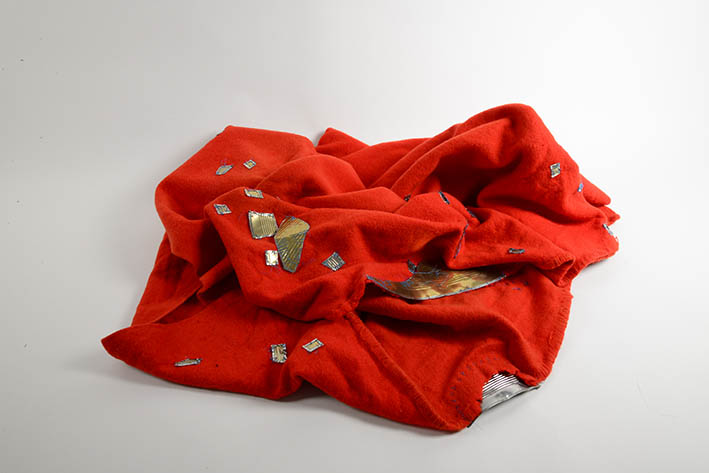Camberwell alumna Bridget Harvey graduated from MA Visual Arts: Designer Maker two years ago and continues her career path as practice-based PHD researcher at Camberwell and Chelsea College of Arts. Below, we asked Bridget about her experience after graduation and her PHD views on repairing narratives for the post-abundance era.
What have you been up to since you graduated?
I have been studying for a practice based PhD at Camberwell and Chelsea. I also work as a visiting lecturer at those colleges and have my own studio practice – I am busy but I enjoy it. During my MA I started to look into repair as a side project and realised it was a fast (re)emerging area of making that I wanted to understand more. So with the support of my course leader I applied for a PhD place and studentship, and was pleased to be awarded both.
What are you working on at the moment?
I am writing my PhD thesis and working on a couple of small pieces for exhibitions. My practice also includes a lot of volunteer and facilitation work so I often do that on the weekends. During the week I am to be found either teaching or in my studio. The exhibition pieces I am working on are different repair methods for ceramics, historic or current, useful or not. My practice guides my research so when I read about new techniques or materials I try to (re)make or repair things using them.
Please tell us more about your research study:
My practice-based research aims to understand the uses, possibilities and applications of repair as a strand of environmentalism. Conceptually and materially, repair has methods/systems peculiar unto itself and can be considered both as a social and political movement.
Breakdown often stimulates innovation and repair develops current understandings, new views and sense of place. I address the ‘decisional burden’ of repair (Graham and Thrift, 2007) as a user activity, service, and as community. I am interested in domestic, analogue objects of everyday life. Through my expanded design practice I use practical and artistic repairing, exploration of repaired objects, anecdotes and life writing, and volunteer work, to assemble repair as an action after, and potentially before, damage. Exhibiting, curating, and facilitating workshops, I use experimental and situational methods to test and develop repair pathways, visibly encouraging practical action and active choice in others.
I am contributing to repair narratives for the post-abundance era and the emergent repair movement. Stewart Brand (1997) states that material maintenance is learning: I posit repair as being material, social and environmental learning. These connections ‘de-garbage’ materials and knowledge, (Rathje and Murphy, 2001; Scanlon, 2005), redefining ownership, choices, values and power. This I call ‘Repair Thinking’.
Overall how was your time at Camberwell?
I did my MA over two years at Camberwell and I enjoyed it greatly. I found the college space itself to be a welcoming and exciting environment, and the workshop facilities were easy to access, with knowledgeable and helpful staff. The MA Designer Maker is self-led, along with my cohort we exhibited internally and externally and worked on interesting projects. I also had the time to undertake two residencies (one through the college to Japan for a month, and another external to the college in Cambridge for a fortnight) which helped develop my practice and profile.
What tips would you give students at Camberwell?
Make use of as many of the facilities as possible and as much of your time as possible. Network and experiment! Camberwell has a long history with hand-making, which was one of the reasons I decided to study there. I also knew the work of the course tutors and wanted to work with them. So really the skills and experience embodied by the staff and place were most informative for me.
Related links:



